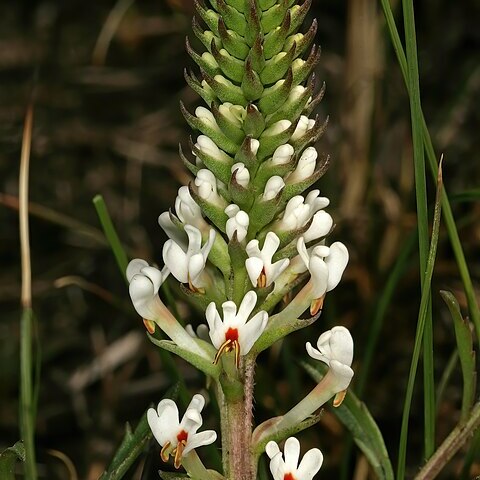Herb, up to 0.6 m high; stems herbaceous, usually several, simple, rarely branched, arising from a woody rootstock. Leaves mainly 30-60 x 1-8 mm, mostly narrowly lanceolate and entire, or broader and ± dentate, some linear. Flowers in single, erect, terminal spikes, up to 200 mm long. Bracts oblong to ovate, acuminate, tapering slowly, membranous margins reaching almost to apex. Corolla white, rarely yellow or orange with orange to red fleck; lobes short. Fruit narrowly oblong, splitting into 2 equal or unequal parts.
Perennial herb, 15–60(80) cm. tall, woody especially at the base; stems erect, simple or branching from the woody rootstock, or prostrate with simple erect branches; branches longitudinally striate, shortly pubescent all over or sometimes only within furrows or subglabrous.
Erect herb, up to 300 mm tall. Stems several from rootstock. Leaves variable in width, usually linear and entire or wider and toothed. Spikes dense, up to 200 mm long. Flowers white or yellow with orange in throat.
Leaves 15–40 x (0.5)1–3.5(5) mm., narrowly oblong, elliptic-lanceolate to linear-lanceolate, acute to subacute, glabrous, entire to shallowly or coarsely dentate, with few teeth in upper third.
Corolla 10–12 mm. long, white with a pale or deep orange throat; tube 3.5–4 mm. long, slender, glabrous; lobes 1–1.5 mm. long, subequal.
Calyx 4–4.5 mm. long, ovate-oblong, obtuse, binerved, somewhat hyaline at margin.
Inflorescence spicate, with spikes 35–50(90) mm. long, dense.
Bracts 5–8 mm. long, ovate-lanceolate, acuminate, glabrous.
Capsule 4–6 x 1 mm., oblong in outline.

